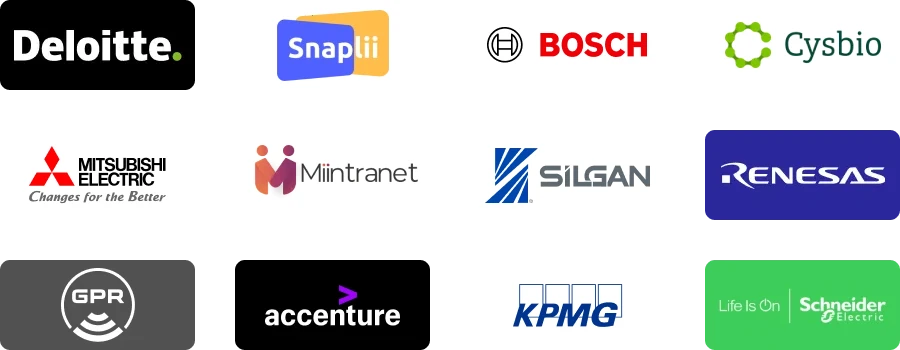| REPORT ATTRIBUTE |
DETAILS |
| Historical Period |
2019-2022 |
| Base Year |
2023 |
| Forecast Period |
2024-2032 |
| Meetings, Incentives, Conferences, and Exhibitions (MICE) Market Size 2024 |
USD 125,725 Million |
| Meetings, Incentives, Conferences, and Exhibitions (MICE) Market, CAGR |
4.4% |
| Meetings, Incentives, Conferences, and Exhibitions (MICE) Market Size 2032 |
USD 177,429.4 Million |
Market Overview
The Meetings, Incentives, Conferences, and Exhibitions (MICE) market is projected to grow from USD 125,725 million in 2024 to USD 177,429.4 million by 2032, reflecting a compound annual growth rate (CAGR) of 4.4%.
The Meetings, Incentives, Conferences, and Exhibitions (MICE) market is driven by the globalization of businesses and the increasing importance of networking events across industries. Corporations are recognizing the value of face-to-face interactions for building partnerships and facilitating professional learning, which bolsters demand for MICE activities. Additionally, technological integration in event management, such as virtual reality and real-time data analytics, is enhancing attendee engagement and operational efficiency. These trends, combined with the recovery of global travel and tourism post-pandemic, are expected to propel the growth of the MICE market significantly.
The Meetings, Incentives, Conferences, and Exhibitions (MICE) market exhibits robust growth across key global regions, with significant market share held by North America and Asia Pacific. North America, driven by advanced infrastructure and a strong corporate sector, continues to lead in hosting diverse events, while Asia Pacific is rapidly expanding due to economic growth and strategic government initiatives in countries like China and Singapore. Prominent players like Freeman, ITA Group, and Flight Centre Travel Group Limited play vital roles in driving innovation and expansion within the market. These companies leverage extensive networks and expertise to deliver comprehensive MICE solutions across multiple geographies.
Access crucial information at unmatched prices!
Request your sample report today & start making informed decisions powered by Credence Research Inc.!
Download Sample
Market Drivers
Globalization and Economic Drivers
The expansion of businesses across borders significantly fuels the demand for the Meetings, Incentives, Conferences, and Exhibitions (MICE) market. As companies venture into new markets, the necessity for international meetings and exhibitions to forge partnerships and explore new territories intensifies. For instance, a survey by the International Association of Exhibitions and Events (IAEE) revealed that a significant number of companies expanded their international presence through MICE events, leading to increased business opportunities. Concurrently, burgeoning economies witness a surge in business activities, elevating the need for MICE events that serve as pivotal platforms for promoting products, networking, and driving business opportunities. This dual dynamic of globalization coupled with economic growth is a critical driver for the escalating scale and frequency of MICE activities.
Emphasis on Corporate Social Responsibility
Corporate social responsibility (CSR) plays an integral role in the planning and execution of MICE events, with companies increasingly committing to sustainability. For instance, a study by the Incentive Research Foundation found that a majority of companies are now selecting eco-friendly venues and implementing waste reduction measures in their MICE events. This shift involves selecting eco-friendly venues, reducing waste, and minimizing carbon footprints, aligning corporate events with global sustainability goals. Moreover, MICE events are increasingly leveraged to support local communities and charities, enhancing a company’s reputation and fostering community engagement, which in turn bolsters goodwill and strengthens stakeholder relationships.
Technological Integration in MICE
Technological advancements are reshaping the MICE industry by introducing virtual and hybrid event capabilities, extending the reach and accessibility of conferences and exhibitions beyond geographical limitations. This transformation not only makes events more inclusive and cost-effective but also enhances participant engagement through sophisticated event planning tools and apps. These technologies streamline the entire event management process from planning to execution, optimizing efficiency, and reducing operational costs, thus meeting the modern demands of flexibility and connectivity in the corporate world.
Government Support and Infrastructure Development
Governments worldwide recognize the substantial economic contributions of the MICE industry, often offering tax incentives and subsidies to attract such events. Alongside financial incentives, significant investments in infrastructure, including modern transportation networks, upscale accommodation, and state-of-the-art convention centers, enhance a location’s attractiveness for hosting international conferences and exhibitions. These governmental initiatives are pivotal in bolstering the MICE market by enhancing the overall appeal and functionality of destinations, thereby facilitating the smooth operation and success of global MICE activities.
Market Trends
Enhanced Event Experiences and Data Utilization
Experiential and immersive event formats are gaining traction, with organizers striving to create memorable engagements that extend beyond conventional conference setups. For instance, MICE Hospitality highlighted that the integration of gamification and advanced technologies like AR and VR enriches the attendee experience, making events more engaging and interactive. Moreover, the use of data analytics is revolutionizing event management, enabling personalized attendee experiences by tailoring content and interactions to individual preferences and behaviors. This data-driven approach also aids in measuring ROI, crucial for justifying expenses and optimizing future events. Additionally, MICE events are increasingly focused on fostering effective networking and collaboration, utilizing dedicated apps and platforms to facilitate meaningful connections among participants, thereby enhancing community building within industries.
Integration of Technology and Sustainability in MICE Events
The MICE industry is witnessing a significant shift towards virtual and hybrid events, which enhance global accessibility by removing geographical barriers, thereby facilitating worldwide participation. This trend not only reduces costs related to travel and accommodations but also adds a layer of flexibility, catering to varying attendee preferences through a combination of in-person and virtual experiences. Parallelly, there is a growing emphasis on sustainability within the sector. Event organizers are actively implementing eco-friendly practices such as waste reduction and the use of sustainable venues. Efforts to minimize carbon footprints are increasingly becoming central to event planning, aligning with broader corporate social responsibility goals that also include supporting local communities and charitable causes through event activities.
Market Challenges Analysis
Economic, Competitive, and Operational Challenges
The Meetings, Incentives, Conferences, and Exhibitions (MICE) industry faces significant challenges stemming from global economic uncertainty. Economic downturns often force businesses to slash discretionary spending, including expenditures on MICE activities, while geopolitical instabilities can disrupt travel plans and event scheduling, sometimes resulting in cancellations or postponements. For instance, a survey conducted by the Global Business Travel Association revealed that during economic downturns, companies often reduce their travel budgets by up to 30%, directly impacting MICE activities. Concurrently, the rise of virtual and hybrid events presents a formidable competition to traditional in-person gatherings. These digital formats are not only more cost-effective but also offer wider accessibility, potentially diverting a significant portion of the audience away from physical venues. Moreover, the operational costs associated with hosting MICE events are escalating. Venue rentals in sought-after locations carry hefty price tags, and with travel and accommodation costs also rising, the financial burden on organizers and participants increases. Additionally, labor expenses related to staffing from event planners to technical support are climbing, further compounding the challenge of managing event costs effectively.
Sustainability and Technological Impediments
Sustainability is becoming a critical focus area within the MICE sector, prompting organizers to minimize their environmental impacts. This shift, while beneficial for the planet, introduces higher operational costs and complex logistics, particularly when aligning with stringent sustainability regulations and standards. The industry is also grappling with challenges related to the increasing use of technology. Dependence on digital platforms for virtual and hybrid events introduces risks associated with technical malfunctions and cybersecurity threats, which can disrupt events and compromise attendee data. The need for robust cybersecurity measures and reliable technology infrastructure is more pressing than ever. Furthermore, the MICE industry is experiencing a talent shortage, especially in areas requiring specialized skills such as event technology and sustainable event planning. This scarcity is exacerbated by fierce competition from other sectors, driving up wages and complicating efforts to attract and retain skilled professionals. These multifaceted challenges require strategic responses to ensure the sustainable growth of the MICE market.
Market Segmentation Analysis:
By Event Type:
The Meetings, Incentives, Conferences, and Exhibitions (MICE) market is strategically segmented by event type to cater to diverse business needs. Meetings are crucial for strategic decision-making and operational management, often held regularly to ensure organizational alignment. Incentives are used to motivate employees and partners, enhancing engagement and productivity through rewarding schemes. Conferences provide a platform for knowledge exchange, networking, and showcasing innovations, attracting professionals across various sectors. Exhibitions are significant for marketing efforts, allowing businesses to demonstrate new products and services directly to potential customers and industry peers. Each event type serves unique purposes, driving the MICE market by meeting the comprehensive demands of modern enterprises for communication and development.
By Industry
Segmentation of the MICE market by industry reveals its extensive application across vital sectors. Healthcare conferences and exhibitions are pivotal in disseminating medical advancements and regulatory changes. The automotive industry utilizes these events for unveiling new models and technologies. Manufacturing and IT sectors also greatly benefit from MICE activities, which facilitate the showcasing of innovations and foster industry partnerships. The segment labeled ‘Others’ includes varied industries like finance and education, which utilize MICE events for professional development and sector-specific discussions. This segmentation ensures that the MICE market can serve the evolving needs of global industries, adapting to sector-specific trends and requirements, thereby enhancing the market’s scope and utility.
Segments:
Based on Event Type:
- Meetings
- Incentives
- Conferences
- Exhibitions
Based on Industry:
- Healthcare
- Automotive
- Manufacturing
- IT
- Others
Based on End User:
- Corporate Companies
- Government Bodies
- Private Groups
Based on the Geography:
- North America
- Europe
- Germany
- France
- U.K.
- Italy
- Spain
- Rest of Europe
- Asia Pacific
- China
- Japan
- India
- South Korea
- South-east Asia
- Rest of Asia Pacific
- Latin America
- Brazil
- Argentina
- Rest of Latin America
- Middle East & Africa
- GCC Countries
- South Africa
- Rest of the Middle East and Africa
Regional Analysis
North America
North America is a significant player in the Meetings, Incentives, Conferences, and Exhibitions (MICE) market, holding approximately 40% of the global market share. The region’s dominance is supported by a well-established corporate sector and a strong inclination towards industry-leading conferences and technological exhibitions. The United States, in particular, hosts a large number of international and domestic MICE events, driven by its global leadership in technology, finance, and healthcare sectors. Cities like Las Vegas, New York, and Chicago are popular MICE destinations, offering extensive facilities and logistic conveniences. The region’s market is further bolstered by sophisticated infrastructure and a matured service industry that caters efficiently to the MICE sector, aligning with the high standards of service and connectivity required for such events.
Asia Pacific
Asia Pacific is rapidly emerging as a powerhouse in the MICE industry, accounting for about 30% of the global market share. This growth is fueled by the economic rise of countries like China, Japan, India, and South Korea, coupled with increasing investments in infrastructure development conducive to hosting large-scale international events. The region benefits from a strategic geographic location and favorable government policies aimed at promoting MICE activities as a core component of economic expansion. Major cities such as Singapore, Hong Kong, and Seoul are becoming favored hosts, renowned for their hospitality, state-of-the-art facilities, and cultural richness, making them attractive for MICE events. The market in Asia Pacific is expected to grow significantly, driven by the burgeoning corporate sector and a concerted push towards tourism and commercial diplomacy.
Key Player Analysis
- Freeman (U.S.)
- Flight Centre Travel Group Limited (Australia)
- Conference Care (U.K.)
- Meetings and Incentives Worldwide, Inc. (U.S.)
- ITA Group (U.S.)
- Creative Group, Inc. (U.S.)
- One10, LLC (U.S.)
- BCD Meetings & Events (U.S.)
- CWT Meetings & Events (U.S.)
- Access (U.S.)
Competitive Analysis
In the competitive landscape of the Meetings, Incentives, Conferences, and Exhibitions (MICE) market, leading players such as Freeman, ITA Group, and Flight Centre Travel Group Limited set the benchmark with their expansive service portfolios and extensive global reach. These companies harness their in-depth industry knowledge and logistical expertise to provide tailored MICE solutions that cater to diverse client needs across various sectors. They leverage cutting-edge technology and innovative event management strategies to enhance attendee engagement and operational efficiency, ensuring standout event experiences. Additionally, these firms are adept at navigating the complexities of different regional markets, enabling them to execute seamless events worldwide. Their strategic focus on sustainability and integration of virtual components also positions them well amid evolving market demands, thereby maintaining their competitive edge in a dynamic industry environment.
Recent Developments
- In January 2024, One10 completed a strategic acquisition of Lorandus, an Ontario-based leader in virtual, hybrid, incentive travel, and face-to-face events.
- In April 2023, Freeman announced the acquisition of Impact Point Group, a nationally certified women-owned business and consulting firm providing a full range of strategic event consulting services. The acquisition would help the company increase its client base, which would also result in enhancing the revenue of the company.
- In March 2022, Meetings & Incentives Worldwide announced organizational changes to position itself as a leader in the industry.
- In November 2022, ITA Group, which deals in providing corporate engagement solutions, announced a partnership with PRM Marketing Services. The partnership would help the company in expanding its Asia Pacific operations.
Market Concentration & Characteristics
The Meetings, Incentives, Conferences, and Exhibitions (MICE) market is characterized by a moderate to high level of market concentration, with a few key global players dominating the industry. These leaders, such as Freeman, ITA Group, and Flight Centre Travel Group Limited, hold substantial market shares due to their comprehensive service offerings, extensive geographic reach, and well-established industry relationships. The market is also marked by its reliance on high-quality service delivery and the capacity to integrate the latest technological advancements to enhance the overall attendee experience. Competitive differentiation in the MICE market is often achieved through unique value propositions like custom event design, sustainability practices, and advanced digital solutions. Additionally, the ability to adapt to various cultural and regulatory environments is crucial, as the scope of MICE activities spans globally, requiring operators to be versatile and responsive to diverse client needs.
Shape Your Report to Specific Countries or Regions & Enjoy 30% Off!
Report Coverage
The research report offers an in-depth analysis based on Event Type, Industry, End User and Geography. It details leading market players, providing an overview of their business, product offerings, investments, revenue streams, and key applications. Additionally, the report includes insights into the competitive environment, SWOT analysis, current market trends, as well as the primary drivers and constraints. Furthermore, it discusses various factors that have driven market expansion in recent years. The report also explores market dynamics, regulatory scenarios, and technological advancements that are shaping the industry. It assesses the impact of external factors and global economic changes on market growth. Lastly, it provides strategic recommendations for new entrants and established companies to navigate the complexities of the market.
Future Outlook
- Continued integration of virtual and hybrid models will expand the accessibility and flexibility of MICE events globally.
- Advancements in digital technology will further enhance the personalization and engagement of event experiences.
- Sustainability will become a core focus, with increased efforts to minimize the environmental impact of events.
- The Asia Pacific region will experience significant growth due to economic development and increasing corporate activities.
- There will be a greater emphasis on creating immersive and experiential events to maintain attendee interest and participation.
- Increased use of data analytics will improve event planning and ROI measurement, tailoring experiences to attendee preferences.
- Security measures, both physical and cyber, will be strengthened in response to growing concerns about data privacy and event safety.
- Partnerships and collaborations within the industry will rise, pooling resources and expertise to enhance service offerings.
- The market will see more competitive strategies focusing on niche markets and specialized events to cater to specific industry needs.
- Government and institutional support for MICE activities will increase, recognizing their economic and cultural benefits to host locations.







